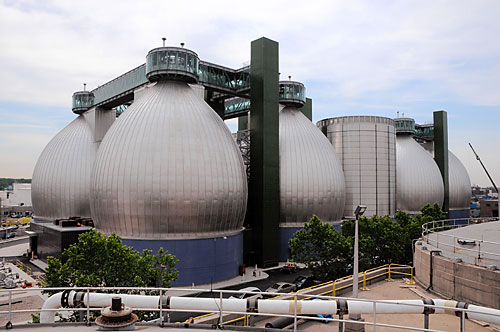One person’s trash and sewage is another’s natural gas.
The city is working with utility giant National Grid to build a facility on Newtown Creek that will convert compost and the putrid emissions coming off of wastewater in Greenpoint’s water treatment plant into natural gas to sell back to Brooklynites. The city’s environmental czar said the process is great for the environment — and great for Big Gas.
“Collecting and treating the more than one billion gallons of wastewater produced in New York City every day is essential to public health and the protection of the environment, but it also requires a lot of energy,” said Department of Environmental Protection commissioner Emily Lloyd, former head of the Prospect Park Alliance. “This partnership with National Grid will harness a byproduct of the wastewater treatment process to provide renewable natural gas to local residents while helping to reduce our carbon footprint and clean the air we all breathe.”
The wastewater plant currently uses so-called digester eggs to break down sewage and collects about four tenths of the methane it creates, harnessing the stuff to power the plant. The rest, it burns off. Once the new system is completed, the plant will be able to recycle nearly all of the methane that comes from the sewage. The city will also haul in 50 tons of food-waste compost daily from city homes and restaurant to turn into more potent methane. Since the methane in food waste has not yet been digested — actually digested — like sewage has, it packs a gassier punch, according to the city.
National Grid put out a call for bids to build the apparatus and hopes to have a design ready and approved by next summer. The purifier, which is set to be about the size of an 18-wheeler-truck, is supposed to be up and running by September of 2016.
The purifier is part of a pilot program for the city and National Grid. Waste management experts from elsewhere will study it for their own programs, city officials said.























